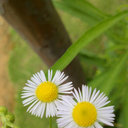Ecofriendly synthesis of silver and gold nanoparticles by Euphrasia officinalis leaf extract and its biomedical applications.
Açar sözlər
Mücərrəd
Biogenic synthesis of silver (AgNPs) and gold nanoparticles (AuNPs) using aqueous extract of Euphrasia officinalis has been reported. Stable AgNPs and AuNPs were formed on adding aqueous solutions of silver nitrate and chloroauric acid with E. officinalis leaf extract, in 19 min and 2 min, respectively. The synthesis method used in present study was simple, reliable, rapid, cost effective and ecofriendly. The synthesized nanoparticles were characterized with field emission transmission electron microscopy (FE-TEM), elemental mapping, selected area diffraction pattern (SAED), energy-dispersive X-ray spectroscopy (EDS), X-ray diffractometer (XRD), particle size distribution, zeta potential and Fourier-transform infrared spectroscopy (FTIR). The UV-Vis spectrum confirmed the synthesis of nanoparticles as the absorption band was observed at 450 nm for AgNPs and at 558 nm for AuNPs. The TEM images revealed quasi-spherical shape of AgNPs and AuNPs. The size of nanoparticles was determined to be 40.37 ± 1.8 nm for AgNPs and 49.72 ± 1.2 nm for AuNPs. The zeta potential value demonstrated the negative surface charge and stable nature of nanoparticles. Crystalline nature of the nanoparticles in the face-centred cubic (fcc) structure was confirmed by the peaks in the XRD pattern and SAED pattern. FTIR results showed the functional groups involved in reduction of silver and gold ions to metal nanoparticles. For biomedical application, the nanoparticles have been explored for anticancer, antibacterial and biofilm inhibition activities. It was observed that AgNPs exert anticancer activity against human lung cancer (A549) and human cervical cancer (HeLa) cell lines. On the other hand, AuNPs were able to inhibit only human cervical cancer cells. Furthermore, the AgNPs were active against clinically isolated human pathogens like Pseudomonas aeruginosa, Escherichia coli, Staphylococcus aureus and Vibrio parahaemolyticus. Additionally, AgNPs also showed biofilm inhibition activity against S. aureus and P. aeruginosa.


